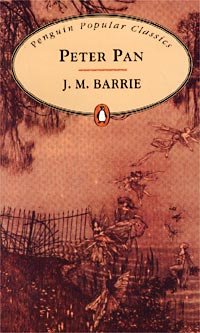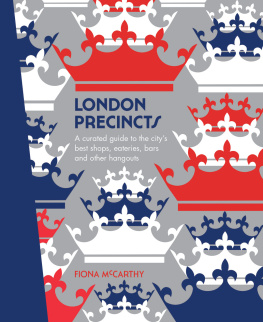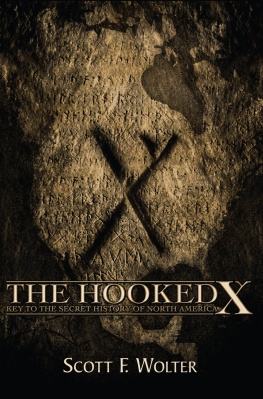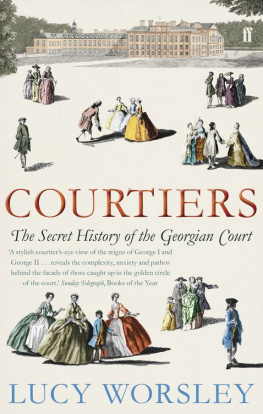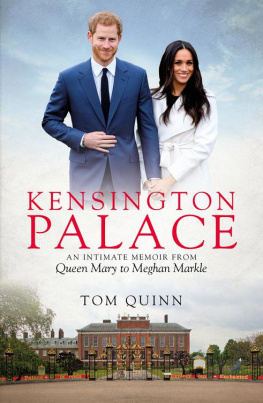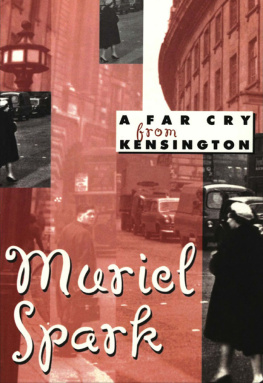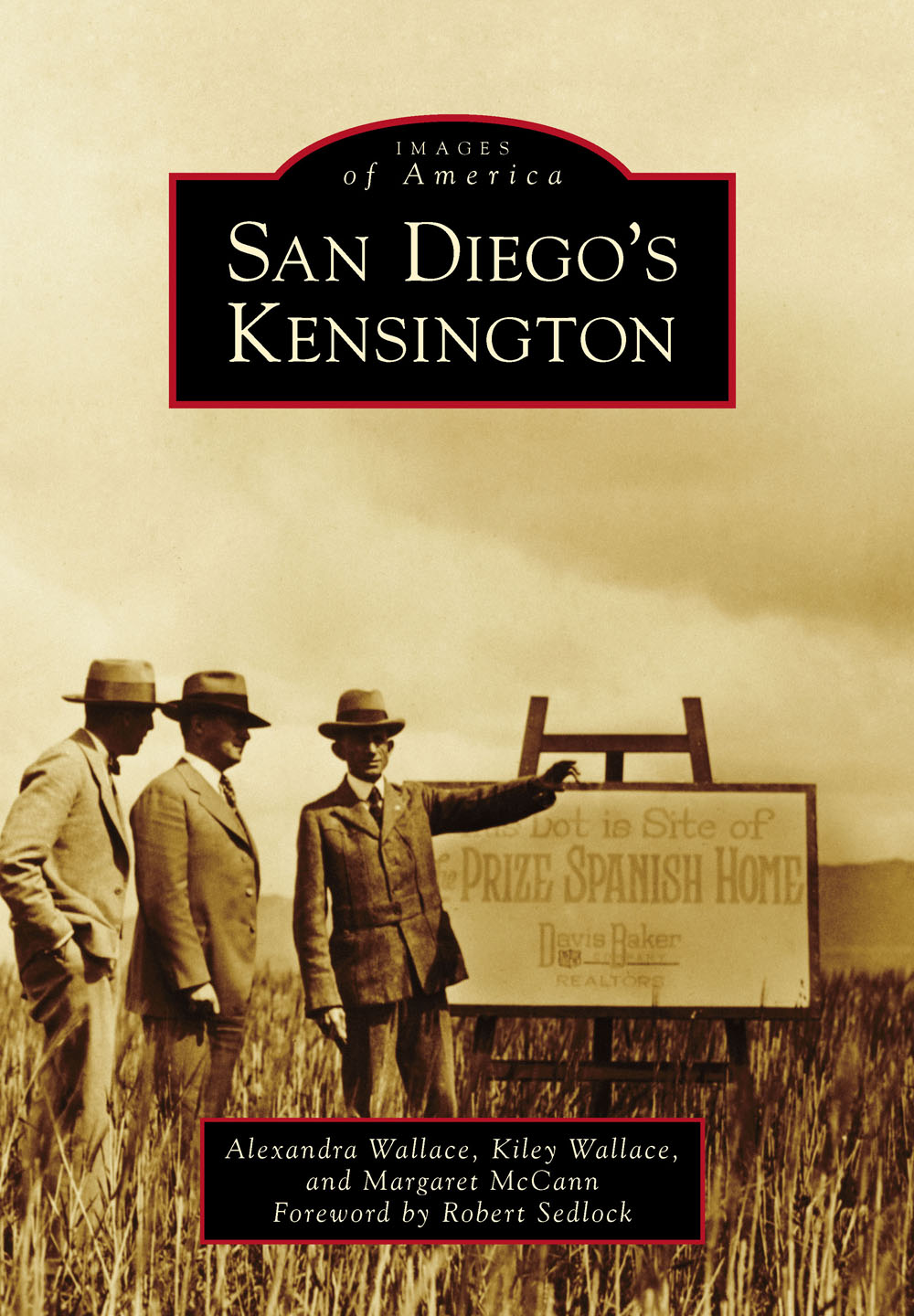
IMAGES
of America
SAN DIEGOS
KENSINGTON

The map for Kensington Park was filed on April 8, 1910. The surveyors did not seem to notice the canyons that would make some of the plots implausible, and when in 1913 the Kensington Park Land Company bought the subdivision rights from the owners, Abbie Hall Hitchcock and Mary Gleason, a new map was filed for the next subdivision, Kensington Manor, and streets were laid out in a curvilinear fashion following the contours of the land. (Courtesy of Ron V. May.)
ON THE COVER: In 1926, George Forbes hired the Davis-Baker Company to develop the land in the Kensington Heights subdivision. One scheme for promoting the subdivision was a sham contest announced in the newspaper. For the prize of $100, readers were asked to design a Spanish-style home for a Kensington Heights lot. Margaret Fickiensen was the declared prize winner, but the actual model home was the work of architect Richard Requa. In this photograph, from left to right, Richard Davis, Harrison Baker, and George Forbes stand on the site of the future Prize Spanish Home. (Courtesy of San Diego History Center.)
IMAGES
of America
SAN DIEGOS
KENSINGTON
Alexandra Wallace, Kiley Wallace,
and Margaret McCann
Foreword by Robert Sedlock

Copyright 2017 by Alexandra Wallace, Kiley Wallace, and Margaret McCann
ISBN 978-1-4671-2672-4
Ebook ISBN 9781439663479
Published by Arcadia Publishing
Charleston, South Carolina
Library of Congress Control Number: 2017932809
For all general information, please contact Arcadia Publishing:
Telephone 843-853-2070
Fax 843-853-0044
E-mail
For customer service and orders:
Toll-Free 1-888-313-2665
Visit us on the Internet at www.arcadiapublishing.com
We dedicate this book to our fellow preservationists, photographers, hoarders, and family genealogists, without whom many of these images and the stories they tell would be lost.
FOREWORD
Kensington is a neighborhood that was ahead of its time due to the careful planning of the developers. Their efforts combined to create the ambiance of a village, still apparent today in 2017.
In the early 1950s, my family moved to Kensington. Because of my interest in this area and its architecture and real estate, I wrote a research paper on the development of Kensington for a class at San Diego State College. I was fortunate to be able to interview two of the primary developers who were still residents of Kensington in 1957.
In 1909, the Santa Fe Railway sent G. Aubrey Davidson to find a suitable area in San Diego for the development of a luxury subdivision. He became one of our citys most prominent and visionary citizens. He found the large area of undeveloped land surrounded by valleys and canyons that had been part of the San Diego Mission Rancho and was to become Kensington.
Mr. Davidson, only months before his death in December 1957, accepted a college students request to interview him about the development he had spearheaded in 1910. I met with him in his home on Braeburn Road. Though gravely ill, he still showed great enthusiasm for his beloved Kensington and shared his experiences with me. He felt strongly that the Kensington District had the best climate in all of San Diego County. He was not surprised at the lasting popularity of the district, and told me that Kensington had become all that he and his group had dreamed.
Kensington Heights in the north end was developed by the Davis-Baker Company of Pasadena. George Forbes was the president of the Kensington Heights Company. He was generous with his time and gave me insight into the development. It was promoted extensively with contests, furnished model homes, and aggressive advertising such as You Who Are Planning a Homedo not fail to see beautiful Kensington Heights! Mr. Forbes gave me his library of photographs of homes under construction, completed homes, aerial photographs of the lots, subdivision maps, and promotional materials.
These two men, along with several original residents of Kensington who provided historical anecdotes, provided me with personal information for my 1957 report, The History of Kensington.
I am grateful that Alexandra Wallace, Kiley Wallace, and Margaret McCann are publishing San Diegos Kensington, to inform a widespread audience of the history and unique qualities of this beautiful neighborhood in San Diego, California.
Robert P. Sedlock Jr.
Kensington
ACKNOWLEDGMENTS
The authors wish to thank our many friends and neighbors who provided us with a trove of photographs, making this book a neighborhood effort.
We also wish to recognize Robert Sedlock for his 1957 report, The History of Kensington, which forms the basis for much of what we know about the history of the development of Kensington. Bobs work was brought into the light by the late Dr. Thomas Baumann in his subsequent book, Kensington-Talmadge, 19101985.
We also thank the many historic researchers, in particular Ron May and the late Dale Ballou May, who unearthed drawings, photos, and stories through their process of aiding Kensington residents in obtaining historic designation for their homes.
Our work was made much easier by Carol Meyers and Natalie Fiocre at the San Diego History Center. We also thank the staff and volunteer archivists at Benjamin Franklin Elementary School, Herbert Hoover High School, the KensingtonNormal Heights Branch Library, the Kensington Community Church, the Pacific Southwest Railway Museum, and the Lambda Archives of San Diego. As always, we are grateful to Winnie Hanford for steering us to the right people for photographs and for supporting both this book and the community at large.
INTRODUCTION
Picture to yourself a tract of 150 acres of high level land, 14.4 miles from the center of the city. (Absolutely the best soil in the whole country.) Separated from all surrounding additions by a deep, broad canyon spanned by a $6,000 bridge over which the Street Cars (5 cent fare) run into the very center of Kensington Park. Kensington Park will absolutely and undoubtedly become the fine residential section of San Diego. We say to you in all sincerity, buy now if you possibly can.
William Douglas
Real estate agent William Douglas waxed poetic about the potential of the newly mapped Kensington Park subdivision in a 1910 advertisement in the San Diego Union. Located on a mesa near the south rim of Mission Valley, surrounded on three sides by canyons, this was the first of several subdivisions to materialize on scrub land that would eventually expand to become a San Diego neighborhood called Kensington.
Prior to the arrival of Spanish colonists in 1769, native Kumeyaay families lived in this general area on a nomadic basis, following food resources as they became seasonally available. Spanish explorers and missionaries were the first Europeans to settle on the land, which Spain claimed for itself, and large tracts were parceled out by the Spanish crown to soldiers and missionaries. After the Mexican war of independence from Spain ended in 1821, Alta California, as it was known, became a Mexican territory. The Mexican government secularized the mission lands and redistributed them; one such large tract, called ex-Mission Rancho, was awarded to Santiago Arguello. Arguello was a soldier in the Spanish army of the Viceroyalty of New Spain, and in 1846 was granted Rancho Ex-Mission San Diego from the secularized Mission San Diego de Alcal lands. The 1848 Treaty of Guadalupe Hidalgo ended the Mexican-American War and brought California into the United States. By the 1870s, land surveyors began extending the boundary of the city of San Diego. Real estate speculators bought raw land and then began the process of mapping it for development. One such purchase was made by Massachusetts native Edmund Billings Hall, who had come west with his parents and sister after the Civil War and, along with his father, was listed in the 1880 census as a farmer in El Cajon valley.
Next page

